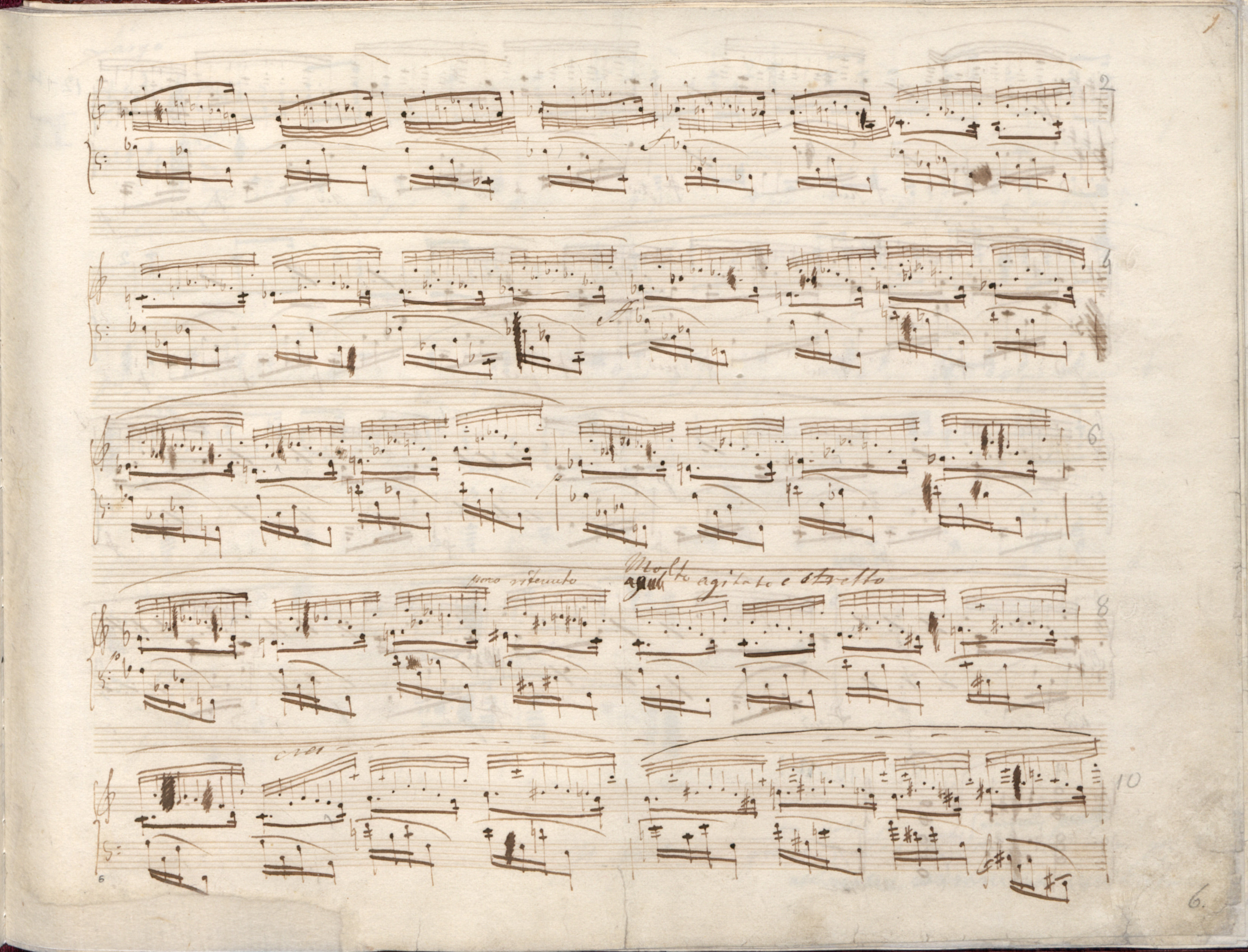



In all sources, the 3rd demisemiquaver in the 2nd group is a b1 (literal interpretation). It is the initial uncorrected version, left by inadvertence – in A, initially, the 3rd demisemiquaver in the first two figures of each of b. 15-18 was a b 1, which Chopin then changed to a
1, which Chopin then changed to a 1 in 7 out of 8 places. Such an oversight in correcting one of a few analogous places would happen to Chopin on a few occasions. The fact that he forgot the discussed note while performing corrections is also evidenced by it having been left without a
1 in 7 out of 8 places. Such an oversight in correcting one of a few analogous places would happen to Chopin on a few occasions. The fact that he forgot the discussed note while performing corrections is also evidenced by it having been left without a  , which was before the respective note of the 1st group of the bar in the initial version.
, which was before the respective note of the 1st group of the bar in the initial version.
Compare the passage in the sources »
category imprint: Interpretations within context; Editorial revisions
issues: Omission of current key accidentals, Errors of A, Omitted correction of an analogous place, Errors repeated in GE, Errors repeated in FE, Errors repeated in EE
notation: Pitch



